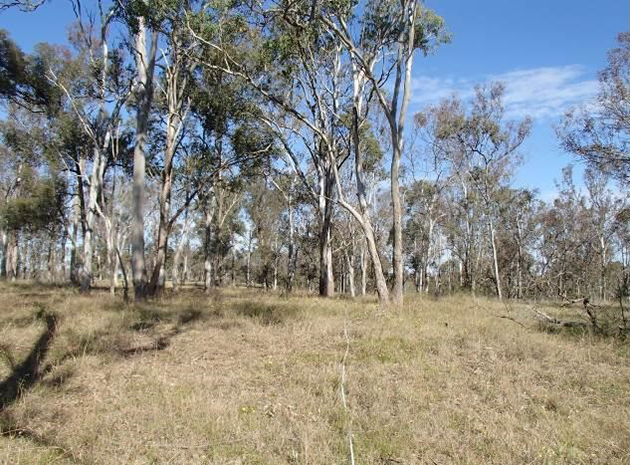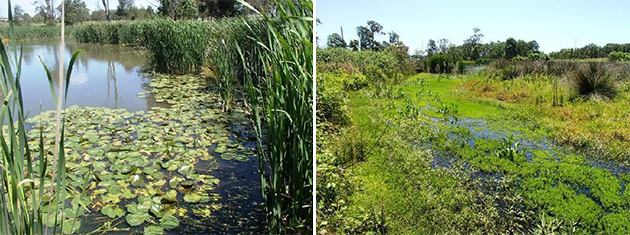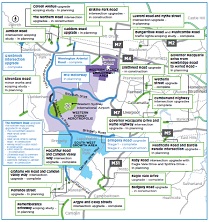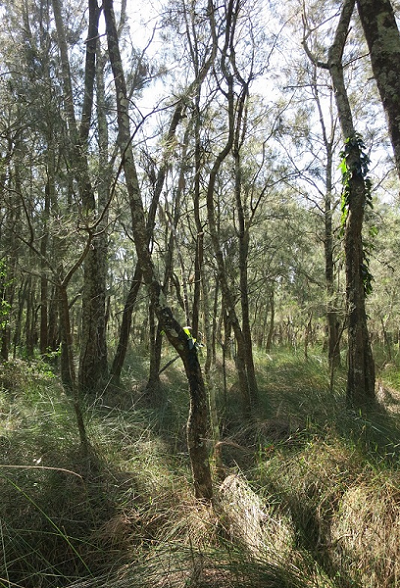Western Sydney Infrastructure Plan
Project overview
The Western Sydney Infrastructure Plan will transform the region's economy and make Western Sydney an even better place to live and do business now and in the future.
By providing improved road network connections, the Western Sydney Infrastructure Plan will transform the region’s economy and make Western Sydney an even better place to live and do business now and in the future.
The Western Sydney Infrastructure Plan will provide significantly safer and more efficient roads for customers.
Interactive portal
To learn more about this project, view our interactive portal for more information.
Project information
Latest report card
July 2017- June 2018 Report Card
The Australian and NSW governments have released the latest Report Card for the Western Sydney Infrastructure Plan, providing a comprehensive overview on the progress of the package.
View or download the Western Sydney Infrastructure Plan July 2017 - June 2018 Report Card.
Background
Western Sydney is Australia’s third largest economy. During the next 20 years the region is expected to grow from two million to three million people, which is why the Australian and NSW governments are investing money into significant road infrastructure.
By 2031, greater western Sydney will be home to over half of Sydney's population. Transport for NSW is delivering significant upgrades and expansions of major roads that are needed to accommodate this growth through the WSIP plan. The Plan provides improved road transport capacity ahead of future traffic demand, as planned residential and employment development comes online in western Sydney growth areas and the Western Sydney Employment Area. This work will transform the region’s economy and make western Sydney an even better place to live and do business.
Transport for NSW is committed to making NSW a better place to live, work and play by enabling people and goods to move safely, efficiently, and reliably throughout NSW. The WSIP plan is part of this commitment.
Project updates
To deliver the benefits of the Western Sydney Infrastructure Plan to our customers earlier and to minimise impacts on the community during construction, projects are staged. More details are provided on specific project pages.
The Plan includes:
The Werrington Arterial Road, which opened to traffic in May 2017, was the first major project to be completed as part of the Western Sydney Infrastructure Plan. The upgrade provided road users with better, safer access between the M4 Motorway and the Great Western Highway.
The 10 kilometre Bringelly Road upgrade is being delivered in two stages between Camden Valley Way at Leppington and The Northern Road at Bringelly. Stage 1 between Camden Valley Way, Leppington and King Street, Rossmore should be opened to traffic in late 2018.
The Northern Road upgrade will see around 35 kilometres of road upgraded between The Old Northern Road at Narellan and Jamison Road at South Penrith. The overall upgrade is being delivered in six sections with Stage 1 between Narellan and Peter Brock Drive, Oran Park opened to traffic April 2018.
Upgrading The Northern Road in stages to a minimum of four lanes between The Old Northern Road, Narellan and Jamison Road, South Penrith, including an interchange (underpass) at Bringelly Road. Construction on the first section of The Northern Road started in 2016.
The new M12 Motorway will provide direct access to the Western Sydney Airport at Badgerys Creek and connect to Sydney’s motorway network.
The Glenbrook Intersection upgrade was opened to traffic in October 2018, improving safety and access at the intersection of Ross Street and the Great Western Highway, Glenbrook.
The Australian Government is also investing $200 million in a Local Roads Package, allowing western Sydney councils to deliver improved road connections that support the Western Sydney Infrastructure Plan.
Biodiversity offsets program
We respect the community and the environment by minimising the impact of our road and waterway infrastructure. Transport for NSW seek to minimise and avoid impacts on biodiversity from road and other infrastructure projects. When building roads, sometimes land available for wildlife (biodiversity) is lost and needs to be compensated for. When impacts cannot be avoided, Transport for NSW compensate for biodiversity by ‘offsetting’ in a different place.
In early 2018, we ran an Expression of Interest for landowners in Western Sydney that were interested in entering a Biodiversity Stewardship Agreement on their land. Through the Biodiversity Offsets Program, we now have 550 landowners with signed contracts for 1.1 million hectares which has bought almost $35 million in biodiversity credits.
Biodiversity Offsets Program
How do I participate?
For those property owners interested in lodging an EOI, please complete and return the application form.
You will be contacted by Transport for NSW or its contractor to discuss your application, the biodiversity offset scheme process and next steps. Responding to the EOI is obligation free and does not commit you to anything.
Existing credit holders and those that have already undertaken the necessary ecological assessments do not need to respond via the EOI process and are encouraged to contact Transport for NSW directly.
What is biodiversity offsetting?
Transport for NSW seek to minimise and avoid impacts on biodiversity from road and other infrastructure projects. When building roads, sometimes land available for wildlife (biodiversity) is lost and needs to be compensated for. When impacts cannot be avoided, Transport for NSW compensate for biodiversity by 'offsetting' in a different place.
The NSW Government Biodiversity Offset Scheme provides:
- a consistent biodiversity assessment process for development
- a rigorous and credible offsetting scheme
- an opportunity for rural property owners to generate income by managing land for conservation.
Under this scheme, property owners enter a Biodiversity Stewardship Agreement with the NSW Minister for Energy and Environment and can then sell the biodiversity credits generated by their properties. The scheme is a voluntary process.
Biodiversity Stewardship Agreements provide an opportunity for property owners to receive a guaranteed long-term income in return for managing some or all of their land for wildlife.
Candidate Local Government Areas
EOI are sought from the following Local Government Areas on the Cumberland Plain including:
- Penrith
- Wollondilly
- Wingecarribee
- Oberon
- Liverpool
- Camden
- Campbelltown
- Blacktown
- Hawkesbury
- Fairfield
What vegetation types & species qualify under EOI program?
We are seeking properties with native vegetation (including Cumberland Plain woodland and open forest, Swamp Oak open forest on riverflats and Coastal freshwater wetlands) and native species (including Koala, Cumberland Plain Land Snail, Southern Myotis, Marsdenia viridiflora, and Dillwynia tenuifolia).


What is involved in the EOI process?
The EOI process offers suitable landholders the opportunity to have their land assessed for its biodiversity values, free of charge.
Transport for NSW will also support landholders financially to understand the legal and practical implications of entering a Biodiversity Stewardship Agreement over their land.
In return, Transport for NSW will:
- expect landholders to sign an Exclusivity Agreement with Transport for NSW
- retain ownership of all assessment reports prepared
- discount the costs of preparing the assessment from the credit price.
Participating in the EOI process or signing an Exclusivity Agreement does not mean that landholders must enter an agreement to sell their credits to Transport for NSW.
EOIs will be progressed in the order that they are received and in accordance with Transport for NSW's offset requirement.
Further information
Biodiversity offset requirements for The Northern Upgrade and the M12 Motorway have been considered by TfNSW since the early stages of project development. Eco Logical Australia reports prepared in 2015 and 2016 estimated ecosystem and species offset credit requirements based on the strategic design and worst case scenarios for the project footprints. View or download these reports:
- Western Sydney Infrastucture Plan – Biodiversity Offset Requirements Stage 2/3 - June 2016
- Western Sydney Infrastructure Plan – Biodiversity Offset Requirements Stage 1 - November 2015
As The Northern Road upgrade and M12 Motorway projects have progressed through design development, the offset credit estimates have been refined to reflect the most up to date project footprints.
The latest M12 Motorway biodiversity offset requirements can be found in Chapter 6.2 of the M12 Motorway Amendment Report Submissions Report (Dec, 2020).
For more information about how Transport for NSW supports landholders to enter Biodiversity Stewardship Agreements please read - Selling Biodiversity credits to Transport for NSW Services Fact Sheet (PDF, 354.24 KB).
For more information about what's involved in entering a Biodiversity Stewardship Agreement see the Biodiversity Conservation Trust webpage.

Project map
View or download the Western Sydney infrastructure Plan map.
Project documents
Some documents on this page may not comply with accessibility requirements (WCAG).
If you are having trouble accessing information in these documents, please contact us.
Report cards
- Annual Report Card 2016/17
Western Sydney Infrastructure Plan.
- Annual Report Card 2015/16
Western Sydney Infrastructure Plan.
- July-December 2015 Report Card
Western Sydney Infrastructure Plan.
- Annual Report Card 2014/15
Western Sydney Infrastructure Plan.
- Report Card - January-March 2015
Western Sydney Infrastructure Plan.
Brochure
- July 2015 project brochure
Western Sydney Infrastructure Plan brochure.
Contact us
For further information about this project, please contact:
Phone: 1800 703 457 (toll free)
Email:wsip@transport.nsw.gov.au
Mail: WSIP, Transport for NSW, PO Box 973 Parramatta NSW 2124.
For more information and to lodge your EOI application please contact:
Phone: 1800 517 155

